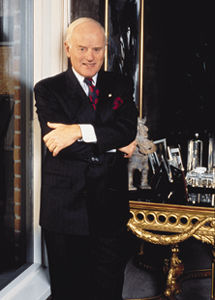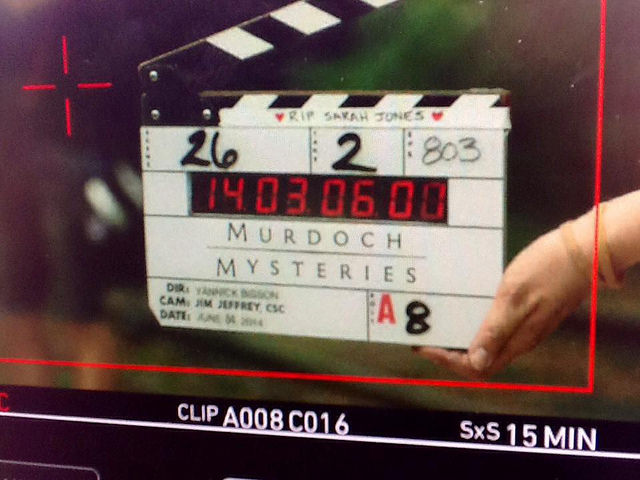Browse "History"
-
Memory Project Archive
Okill Stuart (Primary Source)
"And I remember turning to the chap next to me, saying, you know, a fellow could get killed around here. There has to be a lighter side." See below for Mr. Stuart's entire testimony. Please be advised that Memory Project primary sources may deal with personal testimony that reflect the speaker’s recollections and interpretations of events. Individual testimony does not necessarily reflect the views of the Memory Project and Historica Canada.
"https://d2ttikhf7xbzbs.cloudfront.net/MemoryProject/OkillStuart/860_original.jpg" // resources/views/front/categories/view.blade.php
https://d2ttikhf7xbzbs.cloudfront.net/MemoryProject/OkillStuart/860_original.jpg
-
Memory Project Archive
Oscar Boesch (Primary Source)
Oscar Boesch joined the German Air Force, the Luftwaffe, in August 1943 and volunteered for Sturmstaffel 1, a new fighter unit formed to lead the effort against enemy bombers. In twelve months as a pilot, Boesch flew 120 combat missions - and was shot down eight times, bailed out four times, and had four crash landings.Please be advised that Memory Project primary sources may deal with personal testimony that reflect the speaker’s recollections and interpretations of events. Individual testimony does not necessarily reflect the views of the Memory Project and Historica Canada.
"https://d2ttikhf7xbzbs.cloudfront.net/The-Memory-Project/image/8161_original.jpg" // resources/views/front/categories/view.blade.php
https://d2ttikhf7xbzbs.cloudfront.net/The-Memory-Project/image/8161_original.jpg
-
Memory Project Archive
Rita Tate Holdengräber (Primary Source)
As a child, Rita Tate Holdengräber was a courier for the Polish underground in Warsaw during the Second World War.Please be advised that Memory Project primary sources may deal with personal testimony that reflect the speaker’s recollections and interpretations of events. Individual testimony does not necessarily reflect the views of the Memory Project and Historica Canada.
"https://d2ttikhf7xbzbs.cloudfront.net/The-Memory-Project/image/8145_original.jpg" // resources/views/front/categories/view.blade.php
https://d2ttikhf7xbzbs.cloudfront.net/The-Memory-Project/image/8145_original.jpg
-
Memory Project Archive
Robert Gondek (Primary Source)
Robert Gondek served with II Polish Corps, British Eighth Army at the Battle of Monte Cassino (17 January – 18 May 1944) in Italy.Please be advised that Memory Project primary sources may deal with personal testimony that reflect the speaker’s recollections and interpretations of events. Individual testimony does not necessarily reflect the views of the Memory Project and Historica Canada. Content warning : This article contains content which some may find offensive or disturbing.
"https://d2ttikhf7xbzbs.cloudfront.net/The-Memory-Project/image/15937_original.jpg" // resources/views/front/categories/view.blade.php
https://d2ttikhf7xbzbs.cloudfront.net/The-Memory-Project/image/15937_original.jpg
-
Article
MS St. Louis
On 7 June 1939, 907 Jewish refugees aboard the MS St. Louis were denied entry to Canada. The ship returned its passengers to safe harbour in four European countries. Sadly, 254 of its passengers later perished in the Holocaust.
"https://d2ttikhf7xbzbs.cloudfront.net/media/media/6d356bb1-8262-40a1-a024-3e8d3226a9da.jpg" // resources/views/front/categories/view.blade.php
https://d2ttikhf7xbzbs.cloudfront.net/media/media/6d356bb1-8262-40a1-a024-3e8d3226a9da.jpg
-
Macleans
Munk's Indonesian Gold Coup
On Nov. 14, Peter Munk left his presidential suite at the Jakarta Grand Hyatt and headed to the government offices of Ida Bagus Sudjana, Indonesia's minister of mines and energy.This article was originally published in Maclean's Magazine on December 9, 1996
"https://d2ttikhf7xbzbs.cloudfront.net/media/media/dcd04c48-984b-4d14-b4ee-a60f385de567.jpg" // resources/views/front/categories/view.blade.php
https://d2ttikhf7xbzbs.cloudfront.net/media/media/dcd04c48-984b-4d14-b4ee-a60f385de567.jpg
-
Article
Murdoch Mysteries
Murdoch Mysteries is a TV series about William Murdoch, a fictional Victorian-era detective who is ahead of his time and uses forensic science and technology to solve Toronto’s most complex crimes. Often referred to as a Victorian-era CSI, the long-running police procedural features a mix of humour, intrigue, science fiction, history and period production values. Based on Maureen Jennings’s successful series of mystery novels, the show attracted a cult following after premiering on City TV in 2008. It garnered a much larger audience after being picked up by the CBC in 2013. It was Canada’s highest-rated scripted television series in 2016, 2017 and 2018, and won the Golden Screen Award in 2017, 2018 and 2020. It is seen by millions of viewers in more than 100 countries.
"https://d2ttikhf7xbzbs.cloudfront.net/media/media/035ad198-2587-4ecb-8b95-c11db643d2c0.jpg" // resources/views/front/categories/view.blade.php
https://d2ttikhf7xbzbs.cloudfront.net/media/media/035ad198-2587-4ecb-8b95-c11db643d2c0.jpg
-
Article
Murray Treaty of Longueuil (1760)
On 5 September 1760, three days before the Capitulation of Montreal, the chief of the Huron-Wendat of Lorette, who had accompanied the retreating French army from Quebec to the Montreal region, approached General James Murray at Longueuil. A treaty of peace — known as the Murray Treaty of Longueuil or simply, the Murray Treaty — was concluded whereby the Huron-Wendat came under British protection. (See also Treaties with Indigenous Peoples in Canada.)
"https://d2ttikhf7xbzbs.cloudfront.net/media/media/32a4e97d-85ed-4182-acd7-1f2fa6862fe7.jpg" // resources/views/front/categories/view.blade.php
https://d2ttikhf7xbzbs.cloudfront.net/media/media/32a4e97d-85ed-4182-acd7-1f2fa6862fe7.jpg
-
Article
Musée de l'Amérique francophone
Established in 1806 by the Séminaire de Québec, the Musée de l'Amérique francophone is the oldest museum in Canada.
"https://d2ttikhf7xbzbs.cloudfront.net/media/media/8b6b148e-044b-4ca9-a70a-2080d5773590.jpg" // resources/views/front/categories/view.blade.php
https://d2ttikhf7xbzbs.cloudfront.net/media/media/8b6b148e-044b-4ca9-a70a-2080d5773590.jpg
-
Article
Music History
Since colonization began in the 17th century, the mainstream of musical development has been little affected by native music. The original settlers transplanted their songs, dances and religious chants, and successive waves of immigrants reinforced old-world traditions.
"https://d2ttikhf7xbzbs.cloudfront.net/media/media/afb4a927-c46a-4986-9f7b-a9279183b7bf.jpg" // resources/views/front/categories/view.blade.php
https://d2ttikhf7xbzbs.cloudfront.net/media/media/afb4a927-c46a-4986-9f7b-a9279183b7bf.jpg
-
List
Mysteries in Canadian History
Everyone loves a good mystery. Canadian history is rich with stories of great secrets, unsolved crimes, and events that defy explanation. Among them are the following five mysteries, each shrouded in puzzling circumstances and unresolved endings.
"https://d2ttikhf7xbzbs.cloudfront.net/media/media/b7193f90-fb43-47d3-bcdc-0aea0f099c68.jpg" // resources/views/front/categories/view.blade.php
https://d2ttikhf7xbzbs.cloudfront.net/media/media/b7193f90-fb43-47d3-bcdc-0aea0f099c68.jpg
-
Article
Napoleonic Wars
The Napoleonic Wars (1799-1815) were a series of wars between France and shifting alliances between other European powers.
"https://d2ttikhf7xbzbs.cloudfront.net/media/media/f8065783-2aec-49ca-b51d-18eebc60fe9b.jpg" // resources/views/front/categories/view.blade.php
https://d2ttikhf7xbzbs.cloudfront.net/media/media/f8065783-2aec-49ca-b51d-18eebc60fe9b.jpg
-
Editorial
Flag of Canada: Alternate Designs
The following article is an editorial written by The Canadian Encyclopedia staff. Editorials are not usually updated. A national flag is a simple, effective way of identifying a country and expressing its collective will and sovereignty. Its symbolism should be expansive, representing perspectives from across the country. But it should also be singular, offering a picture of unity. For almost a century, Canada did not fly a flag of its own. There were instead the Union Jack and the Canadian Red Ensign. They took turns flying above Parliament. But neither was distinctly Canadian, nor permanent. The issue of a new flag was raised in Parliament in 1925 and again in 1945. It was dropped both times due to a lack of consent. Some clung to tradition, and none could agree on a unifying symbol. When Prime Minister Lester B. Pearson re-opened the debate in 1964, he offered Canadians the chance to “say proudly to the world and to the future: ‘I stand for Canada.’” A joint committee of the Senate and House of Commons was assembled to decide on a suitable design. After months of vigorous debate, the final design was unfurled at Parliament Hill on 15 February 1965. The design process was open to the public. Thousands of suggestions were submitted. This article looks at 12 of those designs. It includes explanations for the symbols found in each. The designs express a vision for Canada, still young and still finding its mode of self-expression.
"https://d2ttikhf7xbzbs.cloudfront.net/media/media/1a5937f7-ad68-4cb9-8abf-ab518775c641.jpg" // resources/views/front/categories/view.blade.php
https://d2ttikhf7xbzbs.cloudfront.net/media/media/1a5937f7-ad68-4cb9-8abf-ab518775c641.jpg
-
Article
Journée nationale des patriotes
The holiday which takes place on the first Monday immediately preceding 25 May has had several names: Victoria Day, the Queen’s Birthday, Empire Day, Commonwealth Day, fête de Dollard, fête de Dollard et de Chénier and Journée nationale des patriotes. This day is at the heart of a conflict between representations and memories. For most people, it represents the arrival of sunny days. (See also National Holidays.)
"https://d2ttikhf7xbzbs.cloudfront.net/media/new_article_images/JourneeDesPatriotes/360px-Flag_of_the_Patriote_movement_(Lower_Canada).svg.png" // resources/views/front/categories/view.blade.php
https://d2ttikhf7xbzbs.cloudfront.net/media/new_article_images/JourneeDesPatriotes/360px-Flag_of_the_Patriote_movement_(Lower_Canada).svg.png.svg.png)
-
Article
National Policy
The National Policy was a central economic and political strategy of the Conservative Party under Prime Minister John A. Macdonald, and many of his successors in high office. It meant that from 1878 until the Second World War, Canada levied high tariffs on foreign imported goods, to shield Canadian manufacturers from American competition.
"https://d2ttikhf7xbzbs.cloudfront.net/media/media/3d796db1-587b-4b83-b948-3074a8fe7e80.jpg" // resources/views/front/categories/view.blade.php
https://d2ttikhf7xbzbs.cloudfront.net/media/media/3d796db1-587b-4b83-b948-3074a8fe7e80.jpg
